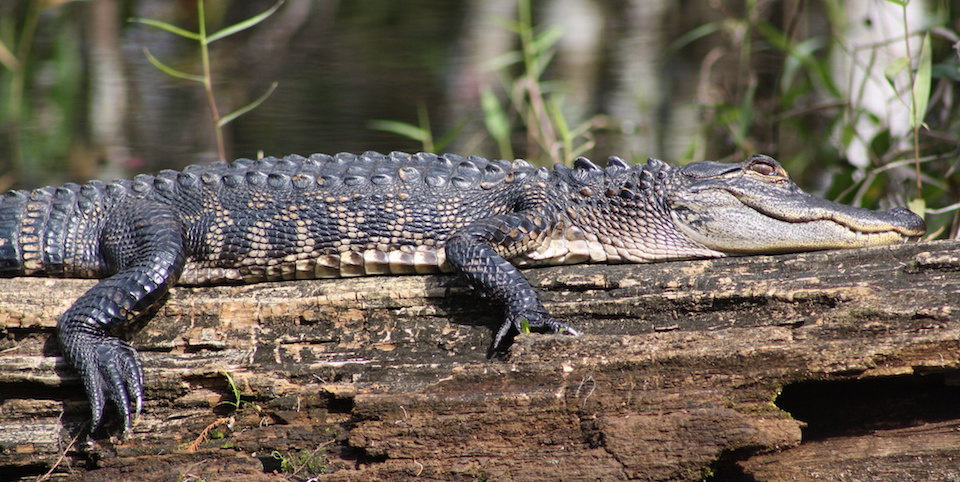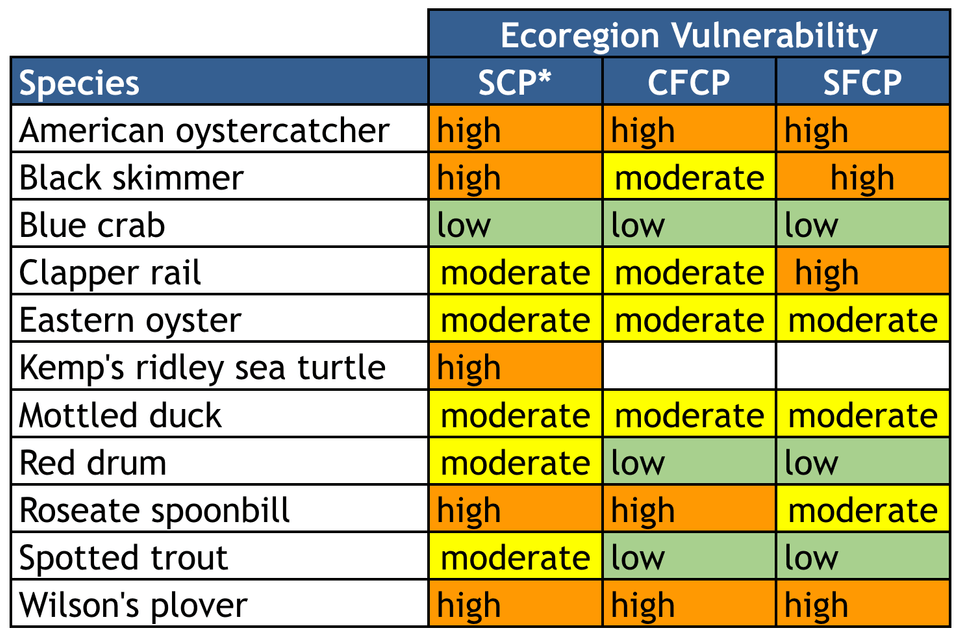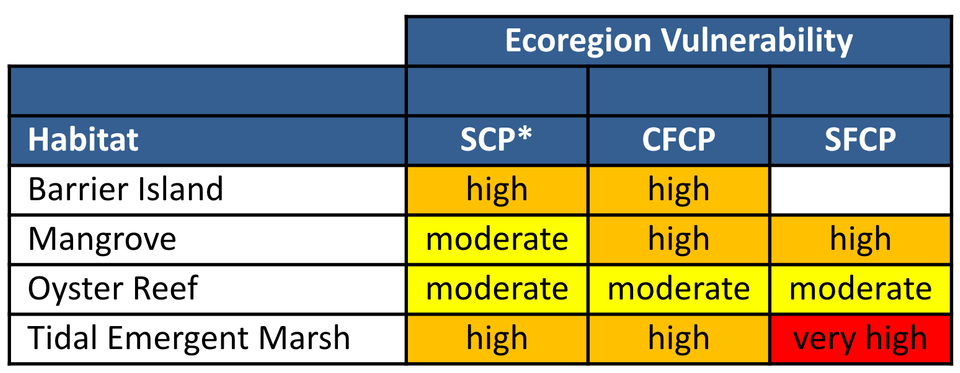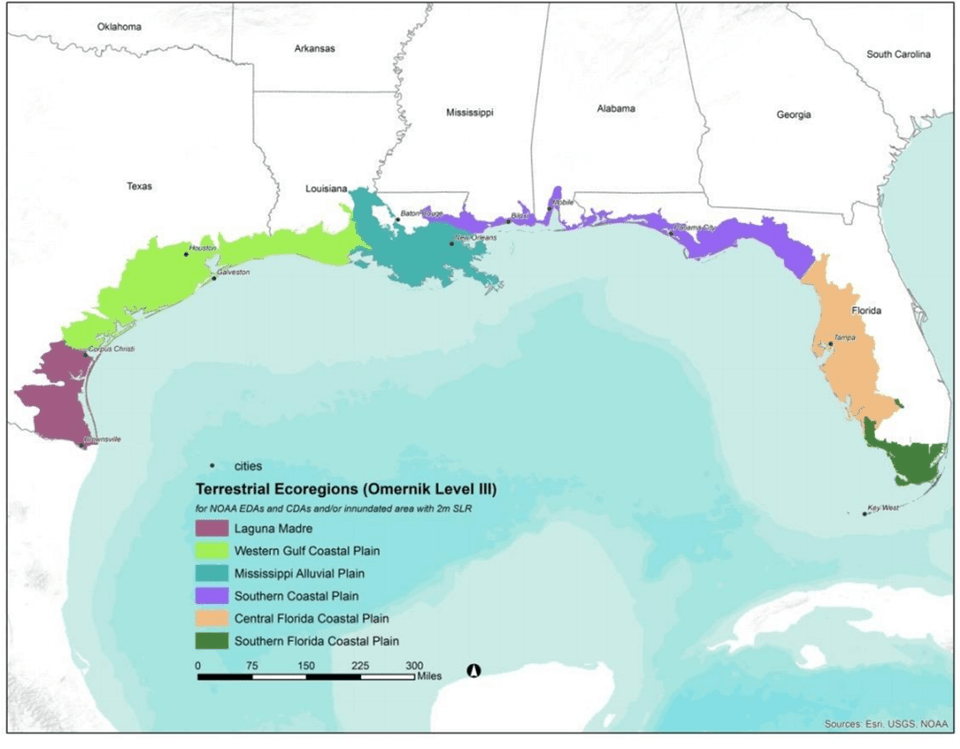- Gulf Coast Vulnerability Assessment
Gulf Coast Vulnerability Assessment

The Gulf Coast Vulnerability Assessment (GCVA) evaluated species and habitats near the Gulf coast using the Standardized Index of Vulnerability and Value Assessment (SIVVA).
This analysis includes 4 habitats and 11 species (6 birds, 1 reptile, 2 fish, 2 invertebrates).
See overall results for:
Learn more about the GCVA methods.
You can also see specific vulnerability assessment results for these species and habitats included here on their profile pages.
Species Overall Results
A total of 11 species were included in the Gulf Coast Vulnerability Assessment (GCVA) including 6 birds, 1 reptile, 2 fish and 2 invertebrates. For each species, a vulnerability score of “low,” “moderate,” “high” or “very high” is offered for 3 ecoregions. For most species, vulnerability was the same or similar across all 3 ecoregions. Overall, the Southern Coastal Plan (SCP) ecoregion had the highest vulnerability scores across species.

Habitats Overall Results
A total of 4 habitats were included in the assessment, “barrier island,” “mangrove,” “oyster reef” and “tidal emergent marsh.” A vulnerability score of “low,” “moderate,” “high” or “very high” is offered for 3 ecoregions, although for most habitats, vulnerability scores are the same or similar across ecoregions.

Methods
The Gulf Coast Vulnerability Assessment included six ecoregions across the Gulf coast. Three of these overlap with Florida:
- Coastal Florida Coastal Plain (CFCP)
- South Florida Coastal Plain (SFCP)
- Southern Coastal Plain (SCP).

Species were selected that have a distribution throughout the Gulf and include those that would be representative of other species. Habitats were selected based on data availability and models.
Standardized Index of Vulnerability and Value Assessment (SIVVA) and SIVVA-Natural Communities methods were used to evaluate the vulnerability of species and ecosystems.
For more information, please read the full report.